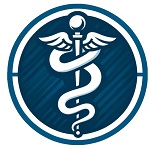
As a medical student, you may be asking whether your school ranking matters? However, rankings can often be misleading since many publications use broad criteria when ranking schools instead of looking at individual statistics.
Additionally, some metrics may be detrimental to medical education. Here are a few examples:
Student selectivity
Student Selectivity Metric (SSMetric) accounts for 20% of a medical school’s ranking and is calculated using three factors. They include median MCAT Score among accepted students, average GPA among enrolled students and percentage of Matriculants that become Primary Care Physicians. While this metric might seem like a reliable indicator of school quality, its accuracy can sometimes be misleading.
Schools could also become incentivised to focus on other metrics unrelated to education quality, such as low acceptance rates. This may have a detrimental impact on medical student education experience.
Additionally, student selectivity metrics are heavily impacted by subjective assessments from deans and program directors, leading to inaccurate rankings. An ambitious student will still find success regardless of where they attend medical school; don’t let rankings discourage you! Rather do your research and create a list of schools that best fit you!
Faculty resources
Faculty members at medical schools play a vital role in student success. Faculty can help guide them through difficult times by connecting them with resources such as counseling or academic support; additionally, mentorship and community building is something faculty members provide too.
American medical schools can be extremely difficult to get into. Achieving admission requires not only having strong GPA and MCAT scores but also showing excellence and creating niche extracurricular activities like research or shadowing.
Not only should applicants consider their GPA and MCAT score when choosing their medical school, but it is important that they choose one close to home that offers affordable tuition costs as well as one that resonates with their goals and values. Rankings shouldn’t be used as the sole criterion in selecting a school; there are plenty of wonderful institutions which will provide an exceptional education with clinical training opportunities.
Federal research funding
Medical school rankings can help students narrow down their options when searching for medical schools, but applicants should do their own research as well. Relying solely on prestige or reputation may prove detrimental; instead, find one which excels in your specialty area of choice.
Some schools rank highly for research but may not have an appropriate faculty to support the type of research you wish to undertake, due to faculty size being determined primarily by full-time staff rather than student contact time.
Many top-ranked schools provide access to large academic hospitals that specialize in various specialties and subspecialties, making clinical rotations in your desired fields of focus much simpler. Furthermore, residency programs often take into account both an individual’s undergraduate and graduate institutions when matching them to programs.
Diversity and inclusion
No matter the strength of diversity and inclusion efforts at medical schools, they do not tend to reflect this in rankings. This may be because criteria used to rank institutions can vary greatly and serve either economical or political ends; some rankings consider wealth and funding, research excellence, student options, acceptance rate, industrial linkage, alumni success and so forth when ranking institutions.
U.S. News rankings now incorporate data-driven indicators that provide pre-meds with additional insight when choosing their medical school of choice. For instance, in their primary care rankings they now take into account not only graduates practicing primary medicine but also percentage of them practicing it in underserved areas – this provides more meaningful measures than simply counting graduates who practice primary care based solely on one indicator.
